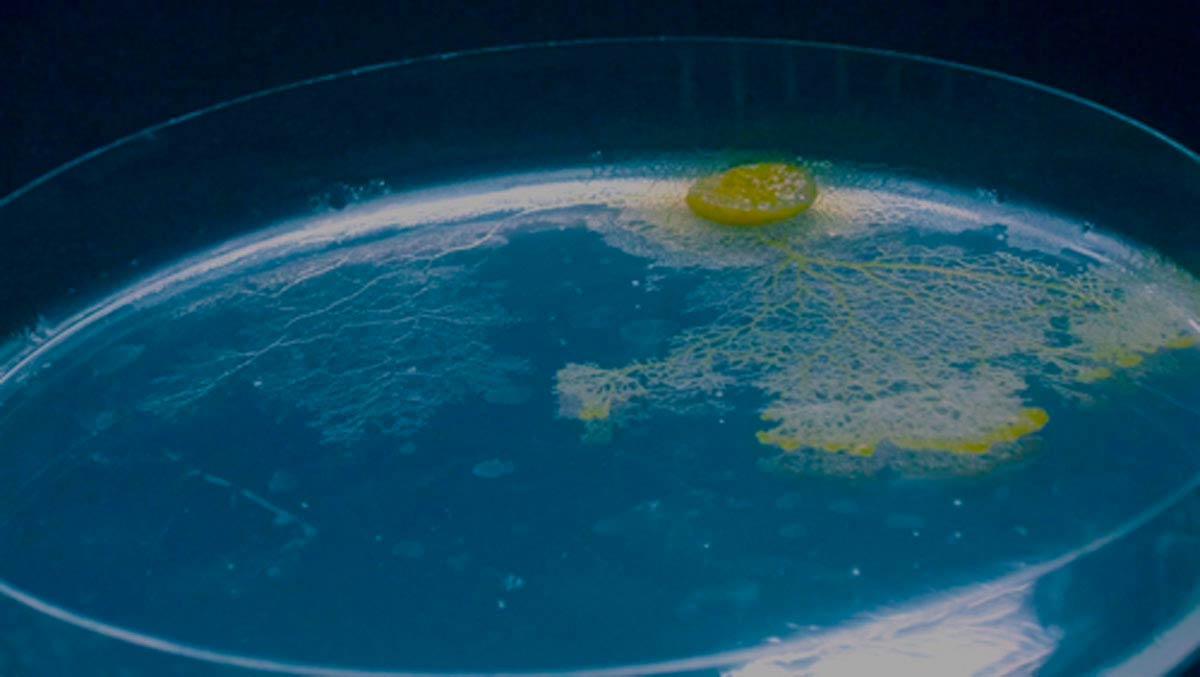Puddles of Goo? Brainless Slime Molds Have Memories

Even without a brain, a slime mold can essentially remember where it's been, helping it navigate past complex obstacles, much like modern robots, researchers say.
These findings reveal how ancient organisms could solve certain problems well before complex brains evolved, scientists added.
Slime molds were once thought to be a kind of fungus, but later work revealed that these puddles of goo are part of a motley group of microbes known as protists. The yellow slime mold the investigators studied, Physarum polycephalum, is actually a giant single cell up to more than 1 square foot (900 square centimeters) in size with up to several million identical cell nuclei inside.
"For a single-celled organism, it has continually surprised researchers with its abilities, such as solving mazes, anticipating periodic events, and even making irrational decisions like we do," said researcher Chris Reid, a complex systems biologist at the University of Sydney in Australia. "It is truly a remarkable creature that is redefining our notions of intelligence."
This slime mold leaves a thick mat of translucent slime behind it as it moves, ooze that Physarum later avoids. As such, the researchers thought the slime mold might use this gel trail as a kind of memory.
"The key misunderstanding might be that slime mold has a memory like we do," Reid told LiveScience. "I can't stress enough that the slime mold is incapable of creating, storing or recalling memories like ours, because it does not have a brain, or even neurons." [10 Odd Facts About the Brain]
"Rather, our definition of memory is very broad — the storage and retrieval of information relating to past events," Reid said.The study authors reasoned this slime mold uses its trail as a reminder of where it has been, leading Reid to liken its ooze "to Hansel and Gretel's bread trail, or Ariadne's thread used by Theseus to escape the Minotaur's labyrinth in Greek mythology."
Sign up for the Live Science daily newsletter now
Get the world’s most fascinating discoveries delivered straight to your inbox.
To explore their idea, the scientists challenged the slime mold with a test in which the organism had to reach a sugary meal it could sense that was located behind a U-shaped barrier. Similar problems are common tests of robots to see if they can autonomously navigate their way past complex obstacles to reach desired goals.
In some experiments, the slime mold could detect its own gel trail. In others, the researchers covered the area with extra gel that masked the slime mold's own trail.
When Physarum was able to detect its own trail, it reached the food about three times more often and about 30 percent faster, on average. Slime molds blinded to their own trails spent almost 10 times longer pointlessly re-exploring areas they had already visited, Reid said.
"This is the first time anyone has demonstrated a spatial memory system in a creature without a brain, and the first piece of evidence that supports the previously untested theory that an externalized memory could have been used by primitive organisms in the distant past to solve problems tackled by complex brains like ours today," Reid added.
Reid and his colleagues plan to continue investigating these trails of slime.
"There could be a whole wealth of information that the slime mold is leaving behind in the slime to communicate with its future self, or even other slime molds that happen to be around," Reid said.
The scientists detailed their findings online Oct. 8 in the journal Proceedings of the National Academy of Sciences.











